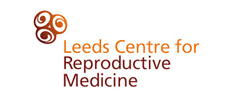ESHRE Conference 2016
My Overview

I have just returned from ESHRE, the annual European meeting that covers all aspects of reproductive science and medicine. There were many interesting presentations and a lot of publicity, although it’s interesting how the press pick up on stories that catch the imagination rather than reflect ground-breaking science. For example, there was a lot of interest in the study that demonstrated that lying down after intra-uterine insemination (IUI) treatment doesn’t increase the chance of conception, compared with getting up straight away. A number of journalists tried to extrapolate this into natural conception and whether it matters what women do after intercourse and whether it’s a myth that you should lie on your back with your legs in the air, which of course isn’t answered by this study.
I liked the way I was quoted in the Daily Telegraph, after I was asked about the best way to conceive naturally:
“After you have had sex, do whatever you want but don’t smoke,”
Professor Adam Balen, chairman of the British Fertility Society, added: “The important thing to say, is that if you want to get pregnant, have lots sex – as much as you want, however you want – and enjoy it, rather than focus on the time of ovulation.” He said there was a lot of confusion about female anatomy, which meant many couples imagined a straight vertical line between the womb and vagina. Couples might prefer to snuggle up after sex, but it would make no odds to their conception chances, he said. “The vagina is tilted and the womb is then tilted relative to the vagina and fallopian tubes and the ovaries, so it is not just one passage. So when you get up, many women think that everything is just going to fall out but anatomically that is not going to happen,” he said. Prof Balen singled out just one bedroom act which would damage conception chances – lighting up a post-coital cigarette. “After you have had sex, do whatever you want but don’t smoke,” Dr Balen said.
The danger of paying too much attention to papers presented at conferences is that the abstracts available before the meeting often don’t tell the whole story and when the presentations are given we can then identify flaws in the science. Furthermore many papers that make the headlines never make it into peer-reviewed journals. For example there was a lot made of a study suggesting that acupuncture might double the chance of conception with IVF but the figures presented were wrong, the study design flawed and the paper heavily criticised by experts in the audience.
I was very impressed by the work of Justin St John, from Australia (who incidentally was in the same A level class as me at school in London back in the ’70s), who has been looking at the effects of enhancing oocyte function by manipulating mitochondrial activity in animal models. In the same session Professor Evelyn Telfer from Edinburgh described her hunt for the elusive “oocyte precursor or stem cells” that might represent the ability of the ovary to produce new eggs, challenging the common belief that at birth the ovary has a fixed number of oocytes, which are then lost progressively over time. She has found the cells but is still uncertain as to whether these may be viable as fertilisable oocytes that could turn into embryos and create a pregnancy.
Pre-implantation Screening of Embryos – Is this the future?
There was a lot of interest in the pre-implantation screening of embryos both to access their genetic integrity, but also the mitochondrial DNA in trophectoderm biopsy of the outer layer of cells in day 5 blastocyst embryos. Is this the future? Well it’s too early to say for sure, but the technology is advancing at a pace with the latest genetic techniques and the ability soon to combine both genetic and mitochondrial screening into a single assay. Whether this technology should be universally applicable is still to be determined – but the field is developing rapidly.
Personalised Medicine was a Key Theme
One of the mantras of the meeting was “individualisation of treatment” or “personalised medicine” and this was the theme of the key note lecture that I gave on ways to predict response to ovarian stimulation and how to minimise the risks of over-response. Too much has been made of “mild” or “minimal” IVF these are obsolete terms, in my view, as all IVF should use the lowest effective dose to achieve stimulation so, in essence, all IVF should be as mild as possible, which is certainly how we approach IVF in Leeds and I believe this to be the case throughout the UK.
There is continued interest in our drive to enhance fertility education to young people by way of informing them about what happens naturally during puberty, how to understand the biology of reproduction in order that they can have safe sex, avoid unwanted pregnancy and at the same time be aware of the factors that may influence their fertility for the future. This is all part of the Fertility Education Initiative that I have started within the BFS and together with many other national organisations. Please see the BFS website for the latest on this and other BFS activities that I am leading on, including a drive to improve the funding of fertility treatments in the UK. I applaud the Scottish Government’s move to increase funding to three cycles, even for those who may have a child from a previous relationship. I am actively involved with the Fertility Fairness campaign and I have been in communication with the HFEA, DH and NHS England to seek equity around the UK.
Once again I was misquoted in the press as I was reported as saying that we should be teaching 9 year olds about infertility. This isn’t what I said – I simply said that 9 year olds need to be introduced to an understanding about how their bodies work!
In my role as Chair of the British Fertility Society we have also had a very busy few months, with a very well attended Training Course in April and the Study Week in June. The reproductive medicine session at the RCOG World Congress in Birmingham last month was packed and the scientific presentations of a very high standard and I gave a key note lecture on PCOS.
First Birth from Ovarian Tissue Transplant
Finally I would like to congratulate Professor Richard Anderson and his team in Edinburgh who recently announced the first birth in the UK from an autologous transplant of cryopreserved ovarian tissue – a very impressive and important milestone for our field.
Women over 40 having more babies than under 20s
New Data from Office for National Statistics
I thought I would share some interesting new data, recently published by the Office for National Statistics (ONS), about the number and age of women giving birth in the UK.
Here are the facts:
Women over 40 are having more babies than the under 20s for in the first time in nearly 70 years. These are official figures for England and Wales.
There were 697,852 live births in 2015.
There were 15.2 births per 1,000 women aged over 40, compared with just 14.5 per 1,000 women in their twenties.
The last time the over 40s had the higher fertility rate was in 1947, in the wake of WWII.
The figures show two key trends in who is having children and when they have them.
Teenage pregnancy Is In Decline
Firstly, it is good to see that the teenage pregnancy rate has been in long-term decline and has more than halved from the 33 births per 1,000 teenagers in 1990.
Pregnancies For Older Mothers Have Increased
Secondly, pregnancies have soared in older age groups from 5.3 per 1,000 in 1990. The average age of having a child is now 30.3 – a figure that has been increasing since 1975.
The ONS says that advances in fertility treatment, as well as more women in higher education and attitudes around the importance of a career and the rising costs of childbearing, are behind the rise.
Liz McLaren, head of vital statistics outputs at the ONS, said: “The trend for women to have babies at older ages continued in 2015. Over the last 40 years, the percentage of live births to women aged 35 and over has increased considerably. Women aged 40 and over now have a higher fertility rate than women aged under 20 – this was last recorded in the 1940s.”
The data also shows that fertility rates have dropped in all age groups under 25, while increasing for all age groups 30 and over. Women aged between 30 and 34 have the highest fertility of any age group – with 111 births per 1,000 women.
The number of births to women born outside the UK has also continued its rise, reaching 27.5% of all births.
The British Pregnancy Advisory Service said: “The trend towards older motherhood is here to stay, and there are many understandable reasons why women today are waiting longer to start or expand their families than those in previous decades.Rather than bemoaning this development, we should seek to understand and support the decisions women make. More affordable childcare and improved maternity rights may make it easier for some women to start their families earlier if they wish, but we also need to ensure we have high quality reproductive healthcare services configured to meet women’s needs, whatever the age at which they conceive.”
Couples Need To Make Informed Choices About When To Have A Baby
In my view, these new statistics illustrate the fact that women are having babies later in life, a trend that has occurred over the last few decades. For a range of social, professional and financial reasons, women are starting families at an older age and this trend is unlikely to be reversed. As healthcare professionals, our role is to advise both men and women about the implications that maternal age can have for fertility, pregnancy and birth and enable couples to make informed decisions about when to plan a family.
We know that female fertility starts to decline gradually from the late 20s and more rapidly from the mid-30s onwards. While the risks should never be overplayed, men and women should be aware that reproductive outcomes are worse in older women. As well as it potentially taking longer to get pregnant, later maternity can involve a greater risk of miscarriage, a more complicated labour, and medical intervention at the birth.
Fertility Treatments Don’t Work For Everybody
Although fertility rates for women aged 40 and above have been generally rising fast, this is contributed to by fertility treatments, and natural fertility among women in their 40s is still considerably lower than for women in their 30s. Furthermore, treatments such as IVF don’t work for everybody and success rates also decline with increasing female age.
Fertility Education Initiative – A New Education Programme By The British Fertility Society
The British Fertility Society (BFS), of which I am Chair, is committed to raising awareness among young people around their reproductive health. We have recently set up a new taskforce called the Fertility Education Initiative, to ensure that the knowledge components of sex and relationship education not only cover how to avoid pregnancies and sexually transmitted infections, but also include information about fertility to help people plan for their future.










